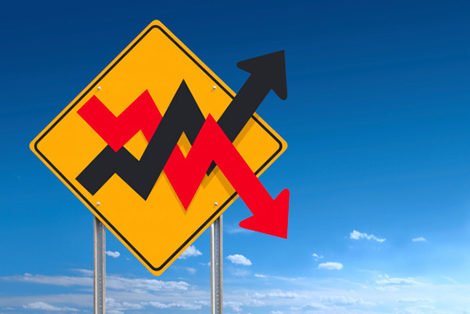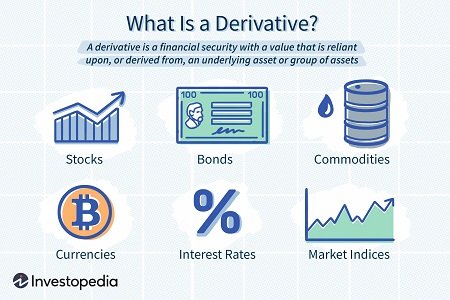Stable Derivative vs Volatility Derivative

We're all familiar with stability derivatives.
- The first one I ever saw was SBD.
It worked very poorly; low liquidity and completely unstable peg.
- Then there was DAI.
Based on ETH collateral and prone to cascading liquidations during the bear market.
Then other forms of collateral were allowed like USDC.
This arguably centralizes the asset beyond all repair.
- Then there was UST.
UST worked pretty great until the entire thing imploded overnight.
Systemic failure is systemic.
- And now we have HBD
Our own native asset works pretty well these days. It's gotten a bunch of upgrades like the ability to convert Hive directly into HBD given an upside pump. The stabilizer proposal has added exponential liquidity to the internal market and allows users to slosh around thousands of dollars at a time instead of double digits. It's fairly stable and has none of the systemic risks of the Terra Luna ecosystem.
In addition to all this.
There must be at least a dozen other algo stable-coins that I have no idea exist let alone how they actually work. At this point I'm fine with that, as I have little interest in wasting my time researching products that have over a 90% failure rate. If something new wants to catch my attention it can do so by merit alone without me having to go look for it.

Volatile polarization
Ultimately the pattern that I've noticed when it comes to algorithmic stable-coin derivatives is that no matter how they are implemented they all have the same outcome. The mechanics in play have but one function: to make the derivative as stable as possible, but in doing so these exact same mechanics guarantee that the collateral in question is made even more volatile than before.
The volatility is outsourced from the derivative to the collateral.
This creates a very weird dichotomy and perhaps even a hint of irony. Why? Because the entire point of having a stable coin is because crypto lacks stability. Businesses and economies demand a stable currency and a solid foundation so they can flourish and succeed. Thus, the fact that we are making the governance token that rules the entire network even more volatile tends to be a bit ironic.
At the same time I think most of us can agree that the price of Hive being more volatile is worth the benefit of having access to a stable asset on an atomic-swap level that exists on-chain. Certainly more agree with this statement now than they did a couple years ago when the peg was broken and Hive >> HBD conversions weren't even possible. HBD has made huge improvements in a relatively short amount of time. Used to be I would hear someone say we should just get rid of it every other week. That doesn't happen anymore.

But what if...
The concept I'd like to posit today is: what if we're doing this backwards? What if the derivative asset shouldn't be stable at all, but rather wildly volatile with the intention of making the collateral and governance coin stable? Could this work? Certainly no network in existence today could even attempt such a thing because it runs contrary to how they were built, but I'd like to imagine a new network could give it a whirl and test out the theory.
How would that even work?
Well the goal of any cryptocurrency has already been stated by degenerates time and time again. The term I'm referring to of course is "only up". Nobody wants number to go down, and if it does have to go down we only want it to go down a little bit or predictably bring the price back into alignment after a big pump in the markets.
Again, using Hive as an example, we've been hovering around this 30 cent level for quite a while. Imagine if the price spiked x2 like tomorrow. That would be bad. Why? Because every time Hive spikes we get 5 seconds of FOMO and then months and months of slow bleeding and selloffs. It's pretty damn annoying you've got to admit.
A volatility token could soften a pump like this by allowing some kind of conversion to take place in which the derivative is burned and the governance token is created with the intention of bringing the inflated price down.
So the governance token would become the stable coin?
Not necessarily. A network can set any rules it wants. Perhaps moving averages would be employed in order to measure the volatility. If volatility gets too high this could trigger the ability for the volatility token to activate, increasing the stability of the governance token while sending the derivative asset in the opposite direction.
It is in this way that a volatility token could act as a value capture mechanism for pumps that mutes the pump, and then slowly drips that value back into collateral as the hype dies down. Smaller pumps, but more importantly smaller dumps as well. This could be a highly desirable trait considering how many tokens bleed 90% of their value during a bear market.
Possible ways to implement conversions
Collateralized Debt
This is how DAI and MAKERDAO mint tokens. ETH/BTC/USDC is locked in a contract and DAI can be pulled out of that contract as a loan given to oneself.1:1 Instant Conversions
This is how UST/LUNA did business. It was a terrible idea and resulted in the complete and utter systemic collapse of the entire system due to greedy VCs thinking they could get infinite 20% yields on a stablecoin.Moving Average Conversions
This is how Hive does business. The peg for HBD is much looser than a traditional stablecoin (1% swings are commonplace) but in combination with the haircut eliminates all the systemic threat present in the 1:1 model.Sliding Scale Conversions
This is an idea of my own design and would act as a variant of the 1:1 model. Instead of being able to convert an asset at a predetermined rate (like 1 HBD for $1 worth of Hive) this conversion would shift in one direction or another the more it gets used. This would allow an asset to still go up or down as normal but would limit the speed at which is happens. Again, volatility would be outsourced to the derivative to some degree based on the custom triggers chosen.
Imagine if the stable-coin was also the governance coin.
Unfortunately one of the most glaring problems with this strategy would be a money attack. Just take Hive for example. Would we really want some billionaire to be able to pump $100M into Hive and own half of all the tokens in existence? Uh, no thanks! I like the distribution right where it's at, thanks. If a billionaire pumps $100M to Hive I want to see the price of Hive do something crazy like x10 or x20, not an x2. This way only tens of millions of tokens could be purchased instead of hundreds of millions.
Is control of the network for sale?
Is providing extra liquidity to a network and creating a more stable environment worth the risk of a hostile takeover? Maybe for some projects. Just a matter of opinion really. I'd say it's not a great solution for Hive considering we've already had to deal with a hostile takeover and that was a definitively not fun experience. Should we avoid such a scenario at all costs going forward? Perhaps. It's up for debate.
Conclusion
Could a purposefully volatile derivative asset have value? Maybe this is a terrible idea. They can't all be winners, after all. Still sometimes it's worth going through the motions and figuring out the theory-crafting in order to determine if something like this could have merit or provide utility to some kind of niche function.
Personally I think we haven't even close to understanding these markets or how to manipulate them to our benefit. 99% of all DEFI assets crashed to zero, and the ones that survived haven't exactly proved themselves to be essential and irreplaceable. Rather they are just cool things you can do with your money like giving yourself a loan without spending crypto. It's pretty clear we have a long way to go before we can actually compete with a lot of these legacy systems in play.
Very interesting conclusion. Patience here is key as we have to wait and see what happens next with these volatile derivative assets. But if it's even only 1% worth waiting for and monitoring over a certain period of time, that 1% which survived namely, they might after all have potential in the future. There is, after all, potential, in everything economic, right? But, from a realistic approach, from potential to fruition there is a long road indeed. All the best, thank you for this post, and plenty of success here on HIVE and beyond!
Hbd as truly made a big improvement. I have seen posts on how people use HBD to purchase things they want in their country.
Truly, sometimes things are worth going through, which is why patience is the key.
I do not see that such volatility is actually preventative, because gaining control of the platform governance is an existential potential, and a billionaire isn't the only threat. BlackRock can literally deploy infinite funds - and as stupidly as it wants, relative to potential profitability in what has been the market - to attain to 17 of 20 consensus witnesses. 100x the present value of all Hive tokens isn't a meaningful hurdle for BlackRock, or even lesser entities of which it is comprised, like Vanguard, StateStreet, or BerkshireHathaway.
I see that we have erected a bar that remains expensive enough to prevent a billionaire from being much interested in taking Hive private, which has a sharp, cutting edge of unprofitability due to suppression of the growth of the community that has been undertaken (which I have complained bitterly about most of my time here). Twatter was taken through means that Hive could not surmount, for example, but with .01% of Twatters market isn't a comparably profitable investment to inspire such conquest.
That's merely takeover resistance, quite comparable to Hive's censorship resistance IMHO, which in fact is a facility of censorship via DV's, just as all that is necessary to govern Hive is most of it's tokens, which is all but impossible to deny to a Soros, Gates, or Musk, or any number of corporations with far higher assets under management.
As long as Hive is a plutocracy, we can't. Everyone with tokens individually decides whether or not to facilitate such conquest by selling, and most of those individuals would likely sell somewhere below 100x current valuation. Realistically, a pretty small number of individuals governs Hive, and despite that being a far higher bar than the Founder's Stake Sun took over Steem with, that difference isn't meaningful to far better capitalized entities than Sun.
The one month delay in exercising governance control provides a potential to insert a poison pill in the event monopoly on Hive tokens is attained, but the nature of that potential poison pill is unknown, excluding it from our consideration. I am confident that the millionaires of Hive are unlikely to meaningfully prefer to secure the platform when the sale of it potentiates their being billionaires instead. Such conquest has been demonstrated to me personally, back when I cared about becoming a millionaire and Citi popped my little asset bubble for ~$100k in direct losses, and an unknown investment in corrupt local, regional, and national governmental agencies, likely not more substantial, but backed with the relatively long-standing grease already lubing up those wheels.
This is why I have adopted the poison pill strategy of completely eschewing money and managing goodwill instead, as Citi et al. have a similar relationship to goodwill as vampires have to sunlight, and this is a meaningful impediment to such interference in my affairs. I don't pretend to present a comparable poison pill Hive could adopt, but the Hive oligarchy must have a couple up it's sleeves because the only meaningful obstacle to financial conquest of Hive is the one month delay in exercising governance on fresh acquisitions of Hive tokens that potentiates implementing one or more poison pills. 30 day notice isn't meaningful otherwise.
Smartest thing I've ever read. My personal experience certainly backs up that statement.
Thanks!
HBD is actually the best and the only thing we need right now is find a way to make sure that HBD becomes a stable coin and then we are very good to go
That's the goal!
Really interesting thoughts, thanks for breaking down the various pros and cons so well. I enjoyed learning bit more about the crypto space, and in particular its affects on Hive! Keep up the good work.